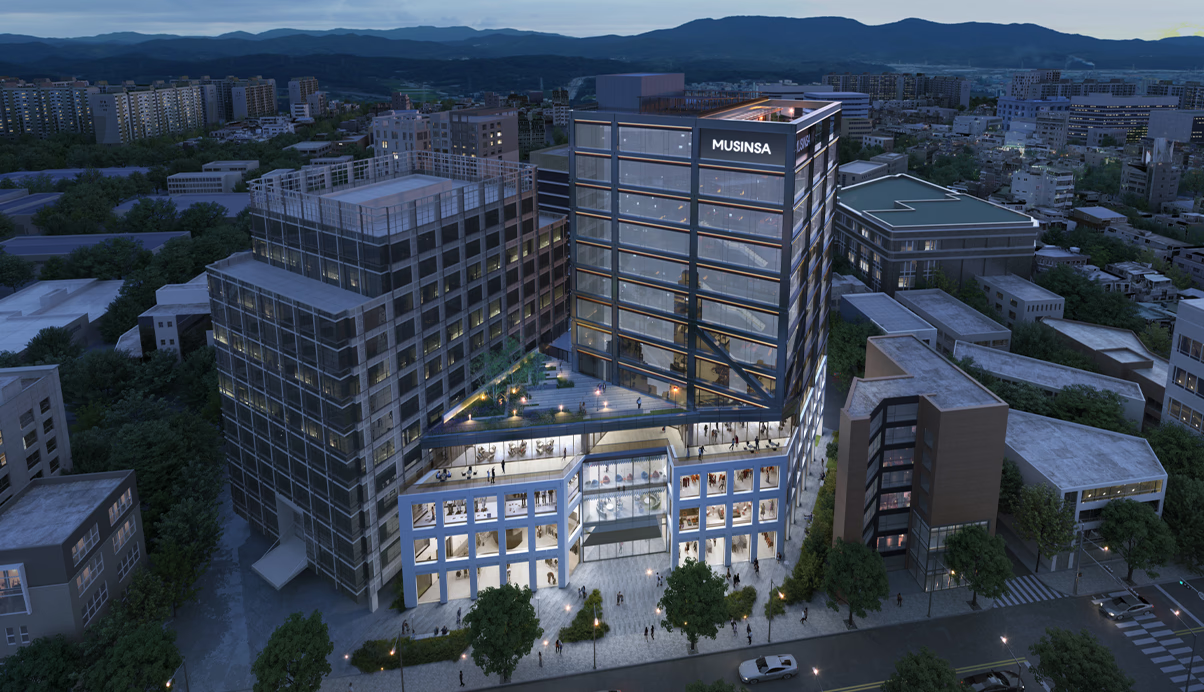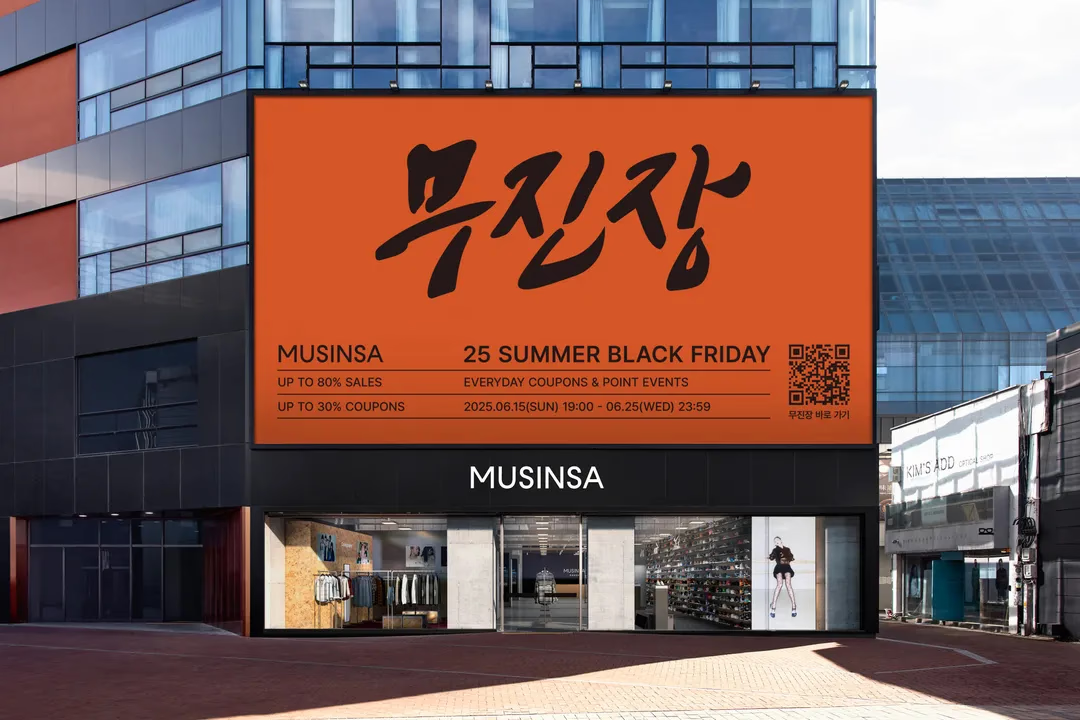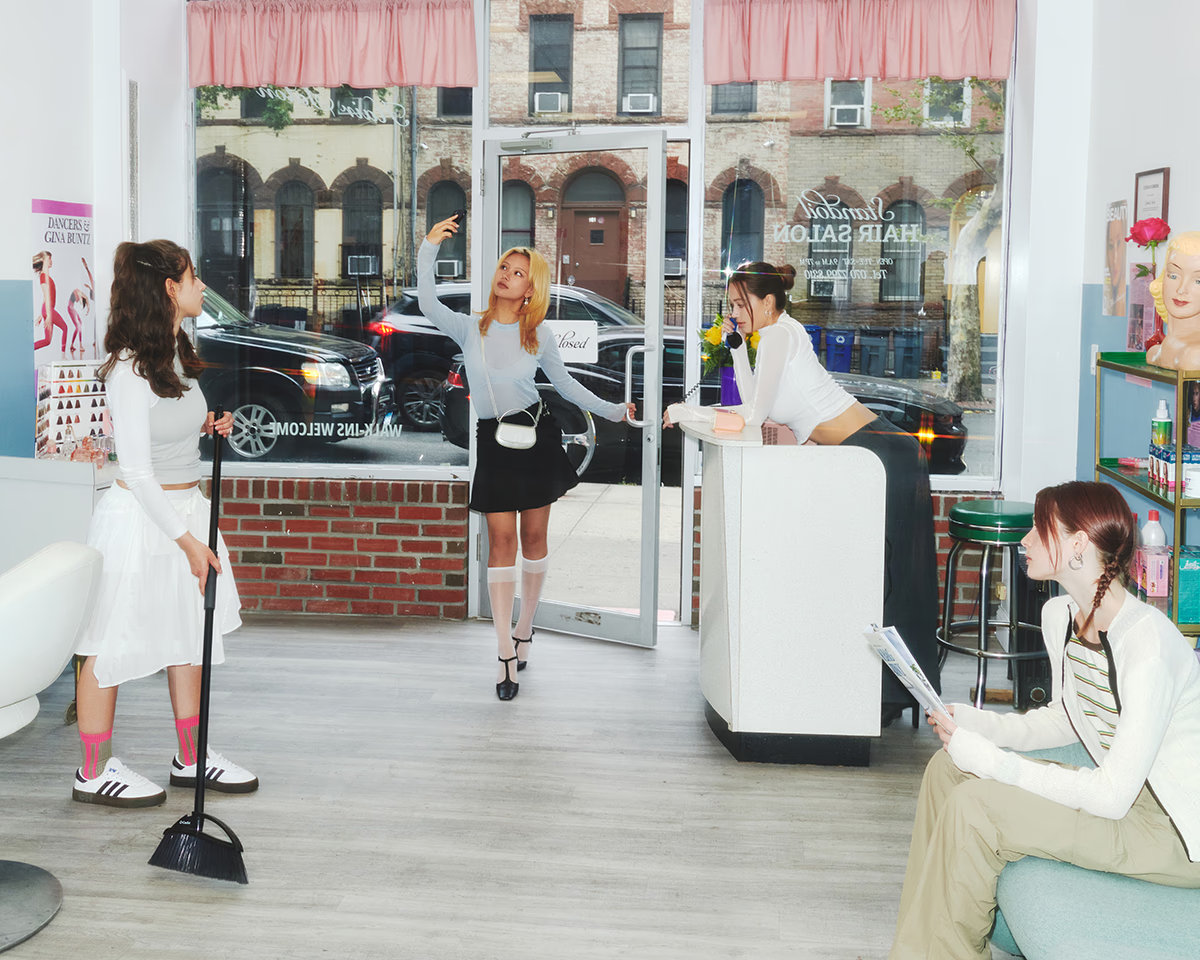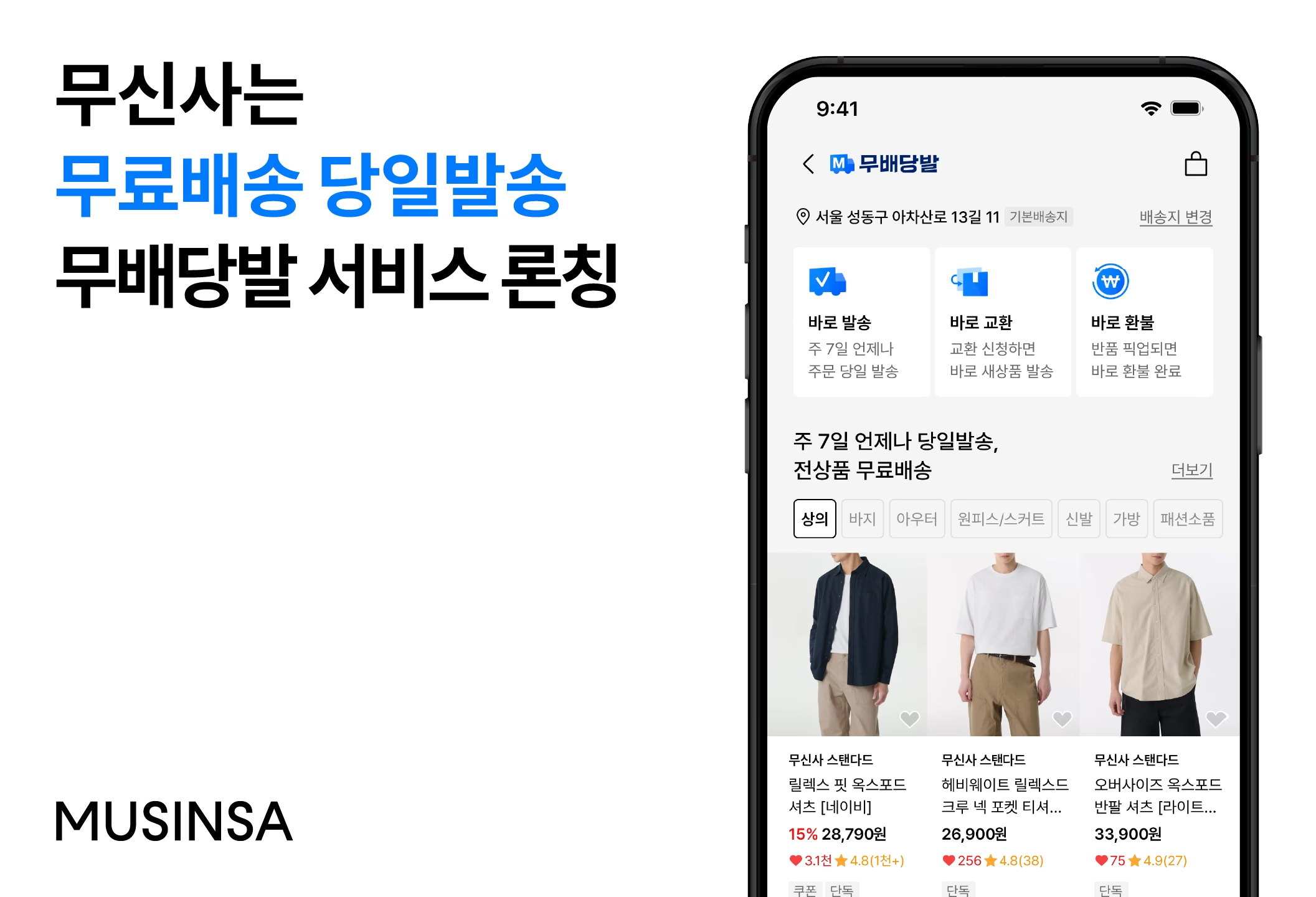
From expanding its private label ‘Musinsa Standard’ stores to 27 locations in the first half of 2025 alone, to aggressively launching ‘Musinsa Store’ select shops that gather K-fashion brands in key commercial districts, the online giant Musinsa is rapidly expanding its offline territory. Amid this trend, a new plan has captured the industry’s attention: the opening of Musinsa Megastore Seongsu, a massive 5,000-square-meter multi-purpose cultural hub in the heart of K-fashion, Seongsu-dong, slated for the first half of next year. This colossal offline project, encompassing not just fashion but also beauty and F&B, clearly shows that Musinsa’s strategy goes far beyond simple store expansion. Having already dominated the online space, why is Musinsa returning to the streets?
This move isn’t just about broadening their business scope. It’s Musinsa’s unique answer to the future of retail in the digital age, the essence of brand experience, and the trajectory of K-fashion. It’s all part of a grand design to bring the immense data and brand power built online down to the physical world, creating a new dimension of customer experience and market dominance.
📱 Into the World Beyond the Screen: The Inevitable Push Offline
South Korean Fashion Market Size and Growth Rate Trends
2015 ~ 2025 Forecast (Unit: 100M KRW, %)
The most apparent reason for Musinsa’s offline pivot is market size. Of the roughly 43 trillion KRW South Korean fashion market in 2021, online sales accounted for about 16 trillion KRW. The fact that a market more than twice as large still exists offline is an irresistible opportunity for any online platform facing potential growth limits.
But market size alone doesn’t tell the whole story. Deeper down lies a more fundamental issue: the limitations of the digital experience. Fashion is an intensely sensory domain. A perfectly styled model on a screen can never fully convey the soft texture of a fabric, the subtle way it drapes on the body, or the difference in color between the display and reality. The joy of discovering your personal style by touching, feeling, and trying on clothes is an irreplaceable value that only offline retail can offer.
A physical store is more than just a place to sell things; it’s a “physical experience space” where customers can engage with the Musinsa brand using all five senses. This serves as a crucial gateway to attract new customer demographics. For the 40s-50s age group, who may be less accustomed to online shopping or prefer to see products in person before buying, a physical store is their first point of contact with Musinsa. The high proportion of new customers and increased purchases from this demographic at Musinsa Standard stores prove this point. It’s an essential move to transition from a brand with a cult following among men in their teens and twenties to a household name beloved by all ages and genders. Furthermore, the effect of strengthening brand trust and fandom is significant. The existence of a physical hub where customers can visit anytime to experience the brand, interact with staff, and resolve issues is a powerful brand asset in itself.
🔗 A Seamless Shopping Experience: The Omnichannel Perfected

What makes Musinsa’s offline strategy special is that it doesn’t just stop at opening more stores. It meticulously weaves online and offline into a single, organic entity through a sophisticated omnichannel strategy. This is based on the philosophy that “no matter where they shop, customers should have the same Musinsa experience.”
For example, when you find an item you like in-store, a quick QR code scan reveals the same real-time discounted price available online. Musinsa members can apply their tier-based discounts and use loyalty points just as they would online. Services like trying on items in-store and ordering online, or buying online and picking up in-store, are now standard. You can even write a review in the Musinsa app for a product purchased at a physical store and earn points.
The core of this strategy is to create a virtuous cycle of data.
First, valuable offline data—which products customers try on most, which colors they touch, and which items they linger in front of—is something that’s hard to get online. This data helps refine online product recommendation algorithms, improve demand forecasting accuracy, and provide crucial insights for planning next season’s collections.
Additionally, online data, such as the most “liked” items or products frequently added to carts, can be used to strategically place those items in the most visible spots in physical stores to boost conversion rates. Analyzing the online shopping data of customers in a specific region allows for the optimization of that local store’s product assortment.
Ultimately, Musinsa is blurring the lines between online and offline. It offers customers a seamless, uninterrupted shopping experience anytime, anywhere, while internally, it integrates and analyzes data from both channels to maximize the efficiency and competitiveness of the entire business. This is not just channel expansion; it’s the process of building a complete ‘Musinsa Universe’ centered around the customer.
✈️ The Forefront of K-Fashion: A Dynamic Global Showroom

Another key driver of the explosive growth of Musinsa’s offline stores is foreign tourists. In 2024 alone, sales to foreign customers surged by over 600% year-on-year, surpassing 20 billion KRW, with visitors from over 100 countries. The ‘Musinsa Store Seongsu @ Daelim Changgo’ in particular has become a pilgrimage site for those wanting to experience K-fashion, with foreign customers accounting for 44% of its total sales.
This phenomenon shows that Musinsa’s stores are acting as more than just clothing shops; they are ‘global showrooms’ for K-fashion. For international tourists on a tight schedule, Musinsa’s locations in Hongdae, Seongsu, and Myeong-dong offer the perfect way to efficiently experience the trendiest K-fashion all in one place. Simply browsing the hundreds of brands curated with Musinsa’s distinct aesthetic—different from Dongdaemun or department stores—provides a taste of the essence of Korean street fashion.
The crucial point here is that Musinsa is not just selling K-fashion; it’s defining its image. Which brands get featured in-store and which styles are pushed to the forefront shape the perception of K-fashion for a global audience. Musinsa is leveraging its immense platform power and curation skills to act as an incubator, discovering small and medium-sized designer brands and introducing them to the global stage. The success of the Seongsu @ Daelim Changgo, which transformed an old warehouse into a K-fashion mecca, clearly demonstrates Musinsa’s potential to export culture, not just brands, through its physical spaces.
🚀 A Launchpad for Partners: An Ecosystem of Mutual Growth

Musinsa’s offline expansion is also opening new doors for its partner brands. For small designer brands lacking capital or operational know-how, opening a standalone store in a prime commercial district like Hongdae or Seongsu is a daunting, often unrealistic, challenge. However, by being featured in a Musinsa Store, they get the opportunity to showcase their products in the trendiest locations without a significant financial burden.
This means more than just a new sales channel. The very fact that a brand is curated and presented by a massive platform like Musinsa acts as a seal of approval, delivering a powerful marketing effect that rapidly boosts brand awareness and credibility. Furthermore, brands gain a risk-free testbed where they can see firsthand which designs and colors resonate with actual customers. This valuable feedback helps improve inventory management efficiency and provides crucial data for future product development. Of course, the most tangible benefit is sharing in the immense foot traffic guaranteed by the Musinsa name. Customers come for Musinsa, but they stay for the joy of discovering new, hidden-gem brands.
In this way, Musinsa provides its partner brands with a launchpad for growth, and in return, gains the content needed to keep its stores fresh and diverse. This creates a healthy, virtuous cycle where Musinsa and its partners grow together, strengthening the entire K-fashion ecosystem.
🗺️ The Grand Design: From Domestic to Global
Musinsa’s offline strategy is already looking beyond Korea to the world. While aiming to surpass 30 Musinsa Standard stores by 2025 and build a dense network across major regional cities in Korea, the company is also taking concrete steps toward its ambitious goal of 3 trillion KRW in global transaction value by 2030.
Building on the experience of successful pop-up stores in Tokyo, Musinsa is planning to launch full-fledged international stores in China, Japan, and Southeast Asia starting in the second half of the year. This isn’t just about exporting stores; it’s an ambitious plan to export the K-fashion platform itself.

The key weapon supporting this grand plan is logistics infrastructure. The fulfillment service Musinsa is preparing is a one-stop system that handles everything from product warehousing and inventory management to packing, shipping, and customer service. This will create a highway for domestic brands to enter overseas markets without complex procedures and provide a fast, reliable shopping experience for global customers. Musinsa is set to prove the old adage—he who controls logistics, controls retail—on a global scale.
Of course, global expansion won’t be without its hurdles. Countless challenges await, from navigating different cultures and consumer tastes to competing with strong local players. But for Musinsa, which has already amassed customer data from over 100 countries online and confirmed the potential of the global market through its physical stores, these are simply challenges to be overcome.
📈 The Future of K-Fashion Is Being Written on the Streets
Musinsa’s offline expansion is more than just a successful case of an online company expanding its domain; it represents a major paradigm shift. It clearly demonstrates the powerful synergy that can be created when digital and analog, online and offline, don’t compete but rather complement and amplify each other.
Breathing life and substance into a brand that once existed only on screens. Offering customers the joy of new discoveries through data-driven curation. Providing partners with opportunities for growth. And ultimately, serving as a platform that carries K-fashion culture to the world. This is the future Musinsa is building with its brick-and-mortar stores.